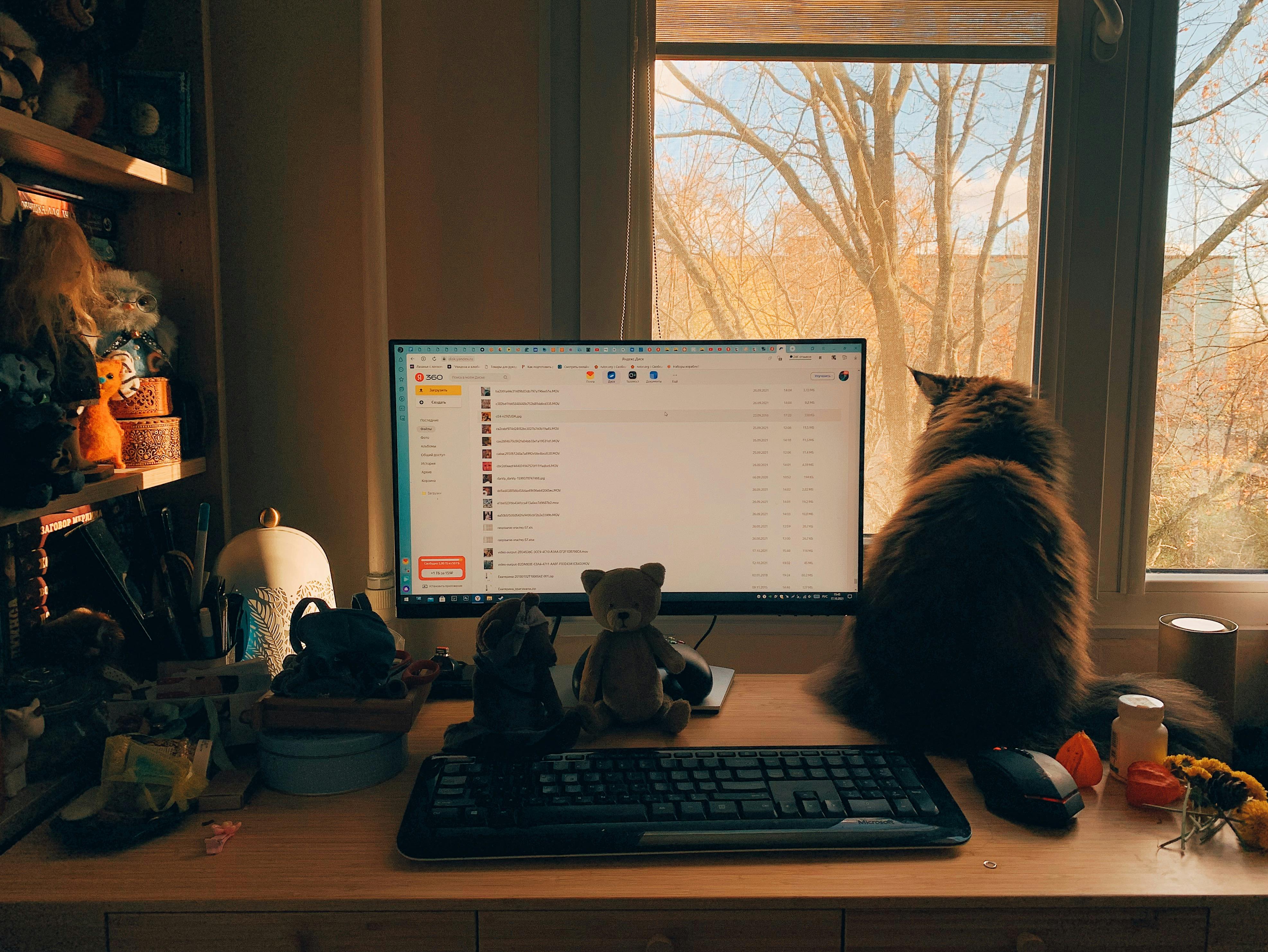Lead Generation
Understanding Lead Generation: A Simple Guide
Unlock the secrets of lead generation: Learn how to nurture prospects, tailor your approach, and boost success with A/B testing in our comprehensive guide to converting leads into business opportunities.
Feb 26, 2024

Ever wondered about the heavy metal that's been a part of human history for millennia? That's lead for you, a common element with a not-so-common impact on our lives. You've probably heard about it in various contexts, from ancient plumbing to modern batteries, but what's the deal with this metal?
Understanding lead is crucial because it's everywhere, yet it's not something you want to take lightly. It's got a bit of a Jekyll and Hyde personality: incredibly useful but potentially harmful. Curious about how this element sneaks into our daily lives and why you should keep an eye out for it? Let's dive in and demystify lead in terms you'll grasp in no time.
What is Lead?

Picture this: you're at a networking event, and you've just handed your business card to someone who seems genuinely interested in what your business offers. That person, intrigued by the conversation and the potential value you could bring, is what's known as a lead. In the world of business, especially sales and marketing, a lead is a person or entity that has shown interest in your product or service and has the potential to become a customer.
Generating leads is like planting seeds in a garden. You don't just toss seeds around and hope for the best; you plant them carefully, water them, and ensure they get enough sunlight. Similarly, getting more leads through cold emails or LinkedIn outreach requires strategy, finesse, and nurturing.
Common Mistakes and How to Avoid Them
When reaching out to potential leads, many fall into the trap of casting too wide a net. They send out generic messages that fail to resonate with the recipient. Just like a mismatched key won't turn a lock, a generic message won't unlock a potential lead's interest. Instead, tailor your messages to the recipient, showing that you've done your homework and understand their specific needs and challenges.
Don't forget to:
Research the recipient's background and business.
Highlight how your product or service solves a specific problem they might have.
Personalize the message to make it clear you're not just sending a form email.
Techniques and Methods for Effective Lead Generation
There's a smorgasbord of methods to choose from when generating leads, but not all are suitable for every situation. For instance, LinkedIn outreach works phenomenally for B2B services since you're reaching out to people in a professional context where they're open to new business opportunities.
On the other hand, cold emails might work better if you have a more targeted list of potential customers who prefer direct communication. The trick is to:
Use a catchy subject line that grabs attention.
Keep your email brief, relevant, and engaging.
Offer clear value and a compelling reason to respond.
Incorporating Lead Generation Practices
First things first, consistency is key. You can't just send a dozen emails or LinkedIn messages and expect a torrent of leads to come rushing in. Routine outreach and follow-ups are essential pieces of the puzzle. Think of follow-ups as gently watering the seeds you've planted – they keep the lead engaged without flooding them with too much information at once.
The History of Lead
Imagine lead generation as fishing. In the old days, you'd cast a wide net and hope for the best. That was the shotgun approach to advertising – think billboards and TV ads. But today, it's more like fishing with a spear; you target precisely who you want, which is what cold emailing and LinkedIn outreach are all about. It's a world away from plastering messages everywhere and waiting to see what sticks.
Common Missteps in Lead Acquisition
Even savvy marketers can slip up when trying to snag those leads. Here's a few no-nos to sidestep:
Mass Messaging: Sending the same message to everyone? Big mistake. Folks can sniff out generic pitches a mile away.
Poor Timing: Contacting leads at the wrong time can equal a lost opportunity. Do some homework and learn when your audience is most receptive.
Ignoring the Follow-Up: Picture this: you finally get a nibble, but then... nothing. Always reel in with a timely follow-up.
Mastery of Techniques: Context is Key

When you're reaching out, it's not just what you say, but how you say it. Let's explore:
LinkedIn Outreach:
Cold Emails:
Each technique has its place. LinkedIn works wonders for personal branding and networking, while cold emails might be better for one-on-one sales pitches.
Strategies for Practice Integration
What's the best route? Consistency. Map out a schedule for sending messages and stick to it. Quality also matters. Invest time in crafting well-researched, personalized messages, and watch your response rates climb. Don't forget to measure your approach. Track what works – and what doesn't – then adjust accordingly. Using tools like CRM software can be a game-changer in monitoring your success and ensuring that you stay on top of your efforts.
Uses of Lead
You might be wondering where lead acquisition fits into the broader scope of your business. Think of lead as the lifeblood of your sales and marketing initiatives – without leads, your business can't prosper. Just as a car needs fuel to run, your business needs leads to maintain momentum.
Lead can be used in various ways across different business strategies:
Cold Emailing: This strategy is akin to knocking on someone's digital door. You’ve got to be polite, brief, and above all, engaging. The key is crafting an email that doesn't feel like it's part of a mass send-out.
LinkedIn Outreach: Imagine attending a networking event. You'd want to engage in conversations, build connections, and leave a memorable impression. LinkedIn allows you to do this from your device. It’s about fostering professional relationships and creating value before you even mention your product or service.
Remember, every individual lead can have different expectations and needs. Personalize your approach and demonstrate that you've done your homework about who they are and what they might need from you.
You've likely encountered the common mistake of being too salesy or jumping the gun. Patience is golden in lead generation. It's crucial not to scare off potential leads with aggressive sales tactics. Just like meeting someone new, you wouldn’t ask for a favor right away – you’d get to know them first.
Furthermore, avoiding a one-size-fits-all approach is essential. Tailoring your message shows that you understand and respect the unique nature of the lead. Just as you wouldn’t gift the same birthday present to everyone, don’t blast the same message to all prospects.
Techniques and Variations:
A/B Testing: Like trying different baits while fishing, you'll see what gets the best bite.
Content Marketing: Offering valuable content is like cooking a great meal for guests; it’s inviting and makes them want to come back for more.
Incorporating these practices involves regular analysis and adaptation. Keep track of what works and tweak what doesn't. Just as a good gardener prunes trees for the best growth, you should refine your lead acquisition strategies for the most fruitful outcomes.
The Dangers of Lead
When diving into lead generation, it's as if you're entering a dense forest; without the right gear and knowledge, you might end up lost. Misunderstanding leads can have dire consequences for your business. Just as you wouldn't wander into unknown territory without a map, you shouldn't tackle lead generation without a solid strategy.
One common mistake is ignoring who you're reaching out to. Consider this: if you're fishing for trout, you wouldn't use bait for a shark, right? The same goes for lead generation. Research your prospects thoroughly to tailor your approach. A generic message will likely get lost in the sea of emails they receive daily.
Create a buyer persona: Who's your ideal customer? Understand their pain points.
Segment your audience: Not all leads have the same needs or wants.
Craft a personalized message: Stand out by speaking directly to their situation.
Mixing tactics can also be a blunder. Imagine trying to bake a cake and grill steak simultaneously - both would suffer. Likewise, blasting cold emails might seem efficient but could damage budding LinkedIn connections who see this lack of focus. Pick a tactic that aligns with your goals and stick with it until it's time to course-correct.
Focus on one platform at a time: Master each before moving on.
When evaluating methods, A/B testing is your ally. Think of it as taste testing recipes; without it, you won't know what truly resonates with your audience.
Test headlines, CTA's, timings: Keep what works and discard what doesn’t.
Lastly, weave lead generation into your daily routine. If you only reach out sporadically, like watering a plant occasionally, don’t expect to see it thrive. Consistent action brings about growth.
Devote regular time to outreach: Build it into your schedule like a habit.
In short, the key is to optimize your approach with personalization, dedication, and agility. Be strategic, avoid common pitfalls, and adapt your lead generation technique to the unique needs of your audience. Embrace each lead as an opportunity to connect and start a meaningful business relationship.
How Lead Enters our Daily Lives
Imagine you're a gardener, and every plant in your garden represents a potential customer. Leads are the seeds you sow, hoping that with the right care and conditions, they'll grow into valuable relationships. In the business landscape, leads find their way to you in various ways, often through daily activities you're already engaging in.
Cold emailing and LinkedIn outreach are two popular methods of planting these proverbial seeds. But here's a common pitfall: sending the same generic message to everyone. That's like scattering seeds on concrete and expecting a garden to bloom. Customize your messages like you'd pick just the right spot in the garden for each type of plant.
Your approach should be simple yet effective:
Research your prospect
Find a common ground
Personalize your message
Let's debunk a misconception: more outreach equals more leads. It isn't a numbers game. It's about quality. Would you rather have a hundred tiny sprouts that never grow or a dozen robust plants? Aim for meaningful connections rather than a massive but shallow network.
When exploring different techniques, consider the A/B testing method. In gardening, this is like testing two fertilizers to see which one helps your plants thrive better. A/B test your outreach messages to see what resonates with your audience. You might find that a personal anecdote works better than a straightforward sales pitch, or vice versa.
To incorporate these practices effectively, consider:
Timing: When are your prospects most likely to read your message?
Relevance: Is your message addressing a current need or pain point?
Follow-up: Are you nurturing your leads by checking in and providing additional value?
By treating each lead like a unique opportunity and carefully nurturing them, you're setting yourself up for a bountiful harvest. Keep these tips in mind, and your outreach will be as rewarding as watching your garden flourish.
Conclusion
You've got the scoop on lead generation and now it's time to put that knowledge to work. Remember, leads are like seeds; nurture them with care and personalization to see them grow into fruitful relationships. Don't scatter your efforts or get caught in the trap of quantity over quality. Stay agile, use A/B testing to refine your approach, and always focus on what works best for your unique prospects. With dedication and the right strategy, you'll watch your lead garden bloom. Ready to get started? Your next success story begins with that next lead.
Frequently Asked Questions
What is lead generation?
Lead generation is the process of attracting and converting strangers and prospects into someone who has indicated an interest in your company's products or services.
Why is understanding leads important?
Understanding leads is crucial because it enables you to tailor your approach to meet the specific needs and interests of your prospects, making your outreach more effective.
Can I use multiple lead generation tactics simultaneously?
While it's possible to use multiple tactics, the article warns against mixing them without a clear strategy, as this might dilute your efforts.
What is A/B testing and why is it beneficial?
A/B testing involves comparing two versions of a campaign to see which performs better. It's beneficial because it allows you to optimize your lead generation efforts based on real data.
What is the importance of consistency in lead generation?
Consistency in lead generation ensures that your target audience sees your message regularly, which can increase trust and the likelihood of conversion over time.
How does personalization affect lead generation?
Personalization makes your outreach more relevant to the recipient, which can significantly improve engagement and the chances of converting leads into customers.
Why should I focus on quality over quantity in lead generation?
Focusing on quality over quantity in lead generation means seeking genuine prospects who are more likely to engage and convert, rather than pursuing a high volume of leads with low engagement potential.
What factors should I consider in my lead generation strategy?
For an effective lead generation strategy, consider factors like timing, relevance, personalization, and diligent follow-up to treat each lead as a unique opportunity.

